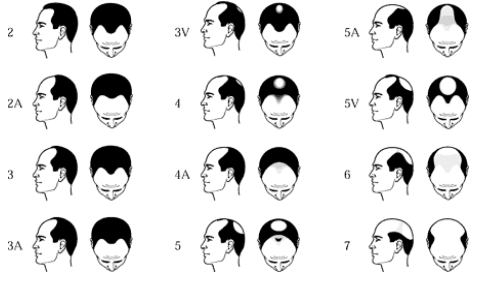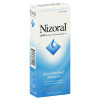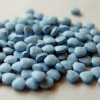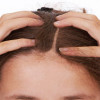Male Pattern Baldness Explained
So you have either noticed some hair thinning or balding already, or you’re worried about a family history of balding and you want to know what you can do to prevent losing any more hair, or if you’re lucky, any at all.
There is a lot of misinformation about this condition, and you need to know the facts before you can tackle the problem head on. First you should understand what causes male pattern baldness, also known as androgenic alopecia. Sufferers of male pattern baldness have a genetic sensitivity to Dihydrotestosterone (DHT). Dihydrotestosterone is a by-product of testosterone. Testosterone is converted to DHT with the help of an enzyme called Type II 5-alpha-reductace, which comes from the oil glands inside the hair follicle.
The hair follicles that are sensitive to DHT then begin to shrink which shortens the lifespan of the hair follicle. Over time they stop producing hair all together. But all hope is not lost – if you are able to catch the condition early enough and are able to suppress the DHT, you can minimize and potentially reverse the effects on the hair follicles.
There are two major treatments which are able to affect change for androgenic alopecia sufferers. We must either address the hormonal sensitivity to slow or stop the effect of DHT, or we can use treatments that help stimulate hair growth regardless of the hormonal sensitivity – Or both.
The first step in deciding your treatments is to review how far along your hair loss has advanced. The Norwood scale is a good indicator to help determine this. There are variations to the scale but it will give you a rough idea how far your hair loss has progressed, and how it will continue to progress if left untreated.
The earlier you are in treatment the more successful it will be. This isn’t to say that there aren’t treatments for everyone; they just may be more costly and invasive, such as hair transplants.
Hair Loss Treatments for Men
There are numerous treatments available for hair loss, and can be broken down into a few categories.
DHT inhibitors – By lowering the levels of DHT in your scalp you effectively relieve the stress caused to the hair follicles by the hormone, allowing them to thrive.
Growth Stimulants – Products such as minoxidil (rogaine/regaine) stimulate the growth of hair regardless of the effects of DHT. It is always encouraged to use both treatments together since the initial cause of the hair loss is because of DHT. With the combined use of both treatments you should see great results.
Anti-androgens – These products do not inhibit the growth of DHT but merely block them from reaching the follicle. This may be a better treatment for men who are trying to avoid the side effects of lower DHT levels.
Anti-inflammatories – They are used to help deal with the inflammation and itch caused by the hormonal reactions occurring in your scalp. There are shampoos available which can have a great effect in this regard and should definitely be used alongside any other treatment to ensure effective treatments.
With proper use of these treatments you can see amazing results. Please continue to read StopThinning.com for more useful information on hair loss and hair loss treatments for men and women. If you’ve enjoyed this article please comment below and share it with your friends so we can stop thinning hair and hair loss for good, and as always, if there is something you would like to see on StopThinning.com please contact us and let us know so we can help make this site better for everyone.








